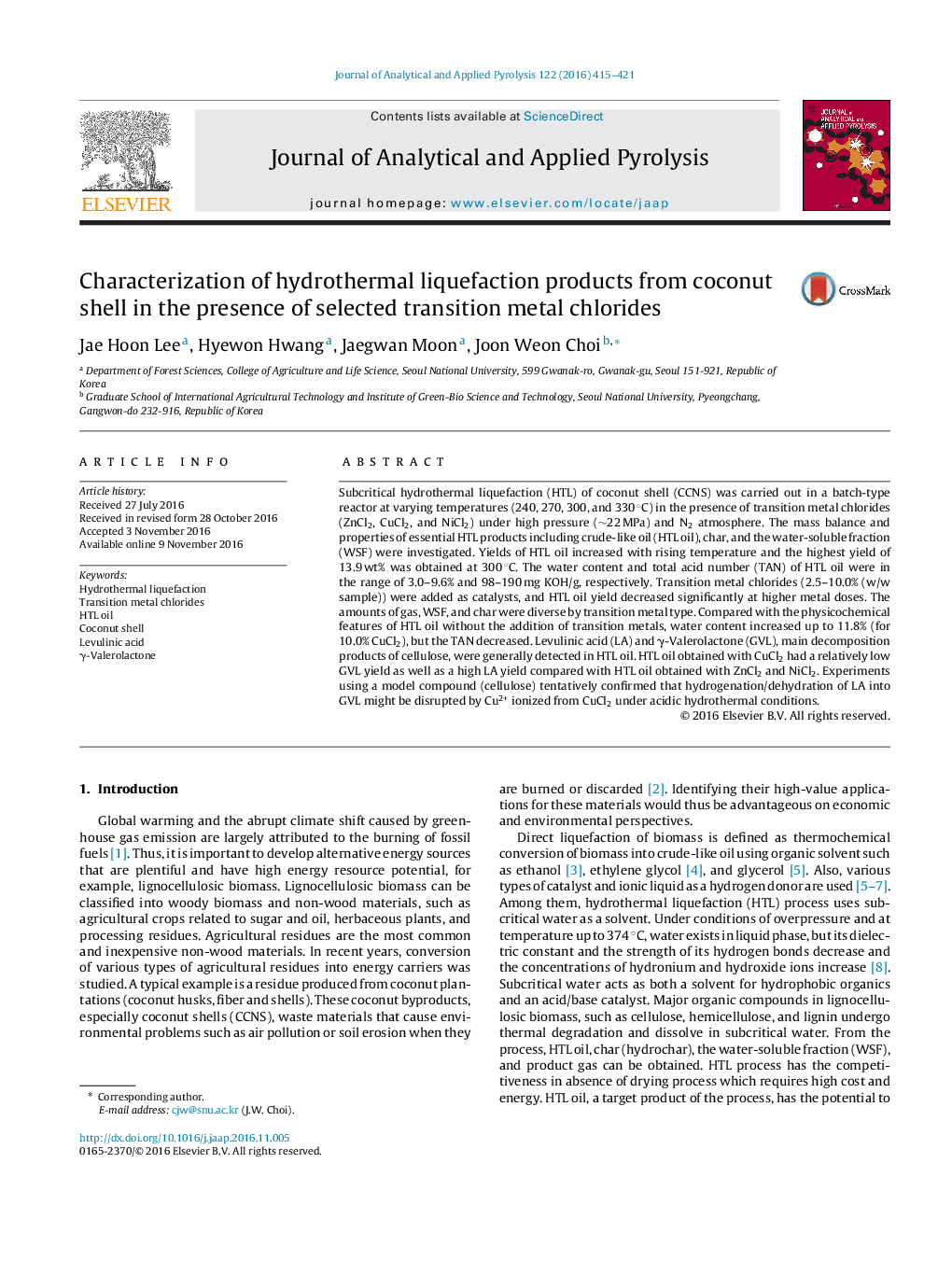| Article ID | Journal | Published Year | Pages | File Type |
|---|---|---|---|---|
| 5134794 | Journal of Analytical and Applied Pyrolysis | 2016 | 7 Pages |
â¢Coconut shell was subjected to a subcritical hydrothermal process with transition metals.â¢Effects of transition metals on mass balance of liquefaction products were investigated.â¢Copper disrupts consecutive hydrogenation of levulinic acid to γ-valerolactone.â¢Model study with cellulose confirmed the catalytic effect of copper during HTL reaction.
Subcritical hydrothermal liquefaction (HTL) of coconut shell (CCNS) was carried out in a batch-type reactor at varying temperatures (240, 270, 300, and 330 °C) in the presence of transition metal chlorides (ZnCl2, CuCl2, and NiCl2) under high pressure (â¼22 MPa) and N2 atmosphere. The mass balance and properties of essential HTL products including crude-like oil (HTL oil), char, and the water-soluble fraction (WSF) were investigated. Yields of HTL oil increased with rising temperature and the highest yield of 13.9 wt% was obtained at 300 °C. The water content and total acid number (TAN) of HTL oil were in the range of 3.0-9.6% and 98-190 mg KOH/g, respectively. Transition metal chlorides (2.5-10.0% (w/w sample)) were added as catalysts, and HTL oil yield decreased significantly at higher metal doses. The amounts of gas, WSF, and char were diverse by transition metal type. Compared with the physicochemical features of HTL oil without the addition of transition metals, water content increased up to 11.8% (for 10.0% CuCl2), but the TAN decreased. Levulinic acid (LA) and γ-Valerolactone (GVL), main decomposition products of cellulose, were generally detected in HTL oil. HTL oil obtained with CuCl2 had a relatively low GVL yield as well as a high LA yield compared with HTL oil obtained with ZnCl2 and NiCl2. Experiments using a model compound (cellulose) tentatively confirmed that hydrogenation/dehydration of LA into GVL might be disrupted by Cu2+ ionized from CuCl2 under acidic hydrothermal conditions.
